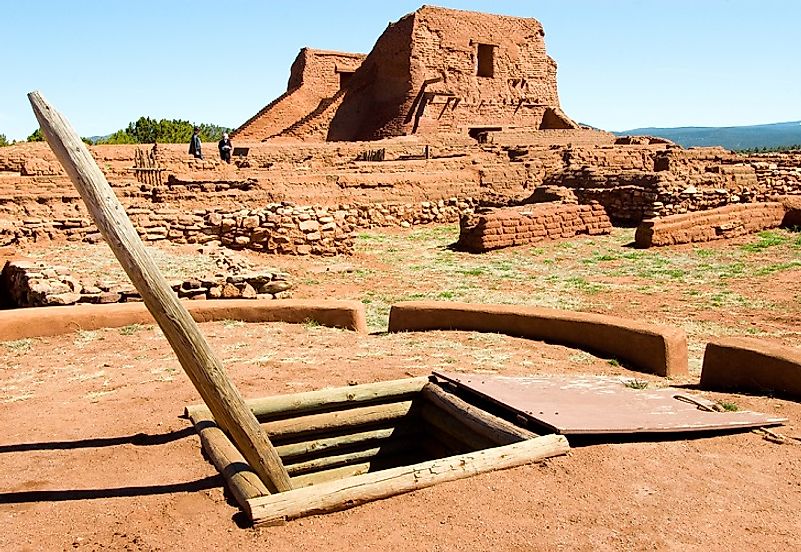The Battle of Glorieta Pass: The American Civil War

5. Background
The Battle of Glorieta Pass took place from March 26 to March 28, 1862, but the background leading up to the battle was significant. In early 1862, Brigadier Henry H. Sibley made preparations to advance the Confederates` agenda by expanding their territory from Texas into the New Mexico region. Sibley thought that if he could he succeed in such efforts, he could establish a direct line of communication between the Confederacy and the California, and lay claim to the southern base of the Rocky Mountains. Initially, Sibley wanted to do this via capturing Fort Craig, which was under the control of Union troops, but he soon dropped the idea after he realized that Union had strong reinforcements at the site. Those same Union troops had taken refuge at Fort Craig after they were defeated in the battle of Val Verde by Sibley`s men.
4. Makeup
On the 10th of March, 1862, Sibley`s troops occupied Santa Fe. Thereafter, Sibley sent more than 200 troops under the command of Major Charles L. Pyron to advance their force over Glorieta Pass in the Sangre de Cristo Mountains. This was a strategic move that would have allowed the confederates to capture Fort Union, which was a key base along the Santa Fe Trail. On March 26th, Pyron`s troops were attacked by Union troops under Major Chivington at Apache Canyon near Glorieta pass. Despite their inferior artillery, Chivington`s troops managed to force Pyron`s soldiers to retreat several times. In his assault, Chivington split his troops into two groups that assisted him to capture the Confederates` rearguard.
3. Description
After the capture, Chivington consolidated his forces and camped in Kozlowski's Ranch, from where he continued the assault on the Confederate forces. Meanwhile, Pyron’s forces were reinforced by another group of 800 men, led by Lieutenant Colonel William R. Scurry, and brought the total number of Confederate troops to over 1,000 men. In the days that followed, the battlefield became silent as both sides received reinforcements and prepared for the larger conflict that loomed. At Fort Union, Colonel John P. Slough led a group of 800 men to reinforce Chivington`s forces. Slough and Chivington supervised two different battle lines. Herein, Slough was supposed to engage the Confederates on the front paths, as Chivington`s men focused on striking the Confederates’ flank. Similarly, in the Confederate camp, Scurry`s men planned to directly engage the Union troops at Glorieta Pass. By March 28th, both sides, each with offensive maneuvers in mind, had advanced to Glorieta pass, where the real battle was set to begin.
2. Outcome
As the Union troops advanced forward, Colonel Slough realized that their initial plan to have the Confederates’ forces attacked from the flank by Chivington`s men would not succeed, as Scurry`s men had anticipated the attack. Consequently, Slough`s troops attacked Scurry`s troops amidst the dark of night. Later, both sides were involved in a series attacks and counterattacks, with Confederate forces inflicting significant damages on the Union troops, thanks to their strong army of foot soldiers and better artillery. In the meantime, Slough`s troops were forced to retreat to Pigeon Ranch, and later to Kozlowski`s Ranch. In essence, Scurry`s men had achieved a tactical victory by securing the pass, but their victory remained a merely nominal one, as Chivington`s forces managed to locate and impound the Confederate supply train, which effectively cut off the Confederate resources, hence forcing them to withdraw. They would never again be able to claim a significant strategic advantage in the mountainous territory. Owing to the rough terrain at Glorieta Pass, the battle necessitated small unit actions that required skill and knowledge by lower level commanders, as there was not open space enough to engage in the large, head-on conflicts characteristic of many other major Civil War battles. By the end of the battle, both sides had incurred significant casualties. On the Union side, 51 soldiers were killed, 78 were wounded, and 15 were captured. On the other hand, Confederate forces suffered 48 killed, 92 captured and 80 injured.
1. Significance
Although the Confederates took the pass itself that day, the Battle of Glorieta Pass was a strategic win for the Union forces. After the end of the war, Sibley and his forces were forced to withdraw, as their supply chains had been cut off by the Union troops. Thus, Sibley and his men returned to San Antonio, Texas to regroup. In essence, Sibley`s defeat effectively brought to an end the Confederate campaigns in New Mexico, which remained under the Union for the duration of the war. Sometimes, the battle of Glorieta Pass is referred to as the “Gettysburg of the West,” as it ultimately kept the Confederates from retaining a stronghold at the base of the Rockies. Today, the battlefield is preserved as a National Historic Landmark, and is part of the Pecos National Historical Park.











